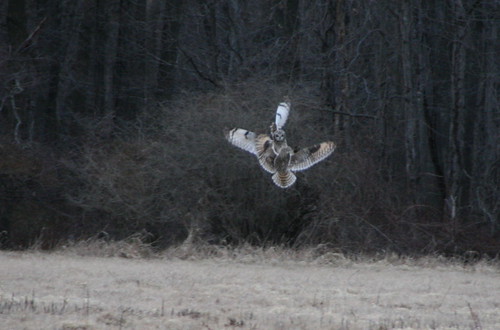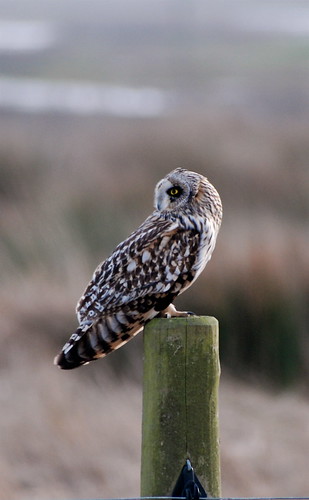I had to have an owl for one of these entries, because let’s face it, everyone loves owls. So here is the Short-eared Owl, Asio flammeus.

The Short-Eared Owl Is one of the most widely distributed species of bird in the world; it’s found on all continents apart from Australia and Antarctica. There are even endemic subspecies on both Hawaii and the Galapagos. These four photos were taken in British Columbia, Iceland, the Galapagos and California respectively.

There’s something slightly mysterious about these species which have incredibly wide natural distributions: Short-eared Owl, Barn Owl, Peregrine Falcon, Osprey, Mallard. I mean: why them? Obviously they have to be adaptable species, but even that just invites the question: what makes them so much more adaptable than other species?

For example: there are about 30 native duck species in Europe. What is it about the mallard that makes it so much more adaptable, so that while other species are dependent on specialised habitats and need to be the subject of careful conservation programs, the mallard just cheerfully takes up residence on any old bit of urban canal or garden pond?

It’s not surprising that when new, manmade habitats appear, like parks and gardens, some species should be quicker to adapt to them, perhaps because they somewhat resemble some wild habitat; so House Martins, which were once cliff-nesters, adapted easily to nesting on buildings. They were moving into an open niche. But presumably that wasn’t true for the Short-eared Owl. So what’s their secret?
» Photo credits, from top down: Short-eared Owl, © Rick Leche and used under the CC by-nc-nd licence. Fighting Owls, © Árdís and used under the CC by-nc-sa licence. Short-eared owl on Genovesa island, © Petr Kosina and used under the CC by-nc-sa licence. Short Eared Owl (Asio flammeus), © leftrightworld and used under the CC by licence.